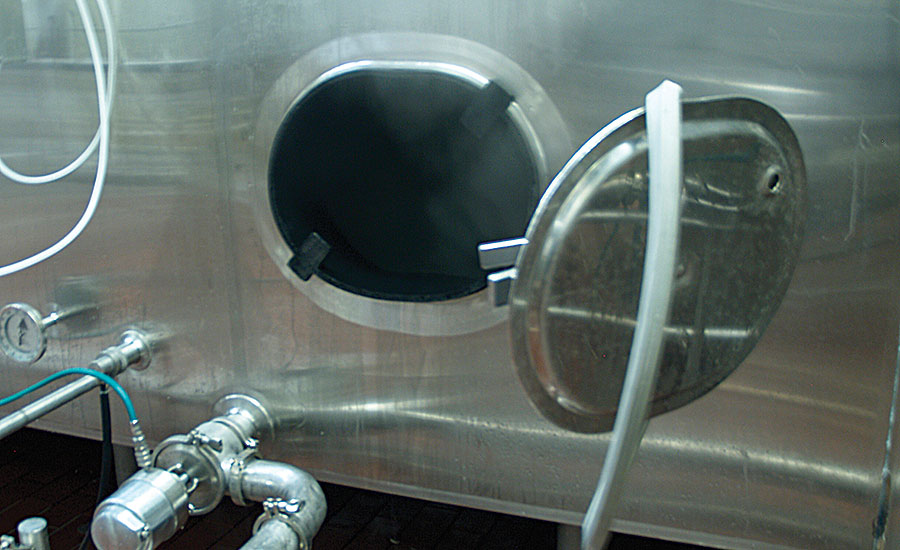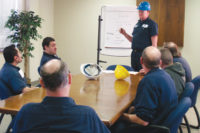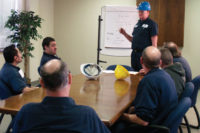During most confined space rescue situations, the magnitude of challenges and potential hazards means response time and access are limited. The emotions of the surrounding workers can quickly overcome the situation, causing a worker to attempt a rescue in a hazardous space without the proper training. This can result in the worker himself getting caught in the confined space. Deaths often occur during rescue – up to 60 percent of fatalities are would-be rescuers, according to OSHA. A quick, efficient, pre-planned response could mean the difference between a rescue… or a body recovery.
1- A permit-required confined space requires an emergency rescue plan
Any time a worker will be entering and working within a permit-required confined space, OSHA requires the employer to execute a confined space permit, as stated in 29 CFR 1910.146. Per OSHA, the permit serves as the employer’s overall program for controlling, and, where appropriate, for protecting employees from permit space hazards and for regulating employee entry into permit spaces. Permit-required spaces require an emergency rescue plan, as entering the confined space could expose the entrant to one or more of these characteristics:
• Contains or has the potential to contain a hazardous atmosphere;
• Contains a material with the potential to engulf someone who enters the space;
• Has an internal configuration that might cause an entrant to be trapped or asphyxiated by inwardly converging walls or by a floor that slopes downward and tapers to a smaller cross section; and/or
• Contains any other recognized serious safety or health hazards.
2- Choose one of three emergency rescue techniques
After a permit has been acquired, an appropriate rescue technique must be chosen to best suit the nature of the confined space and company needs. There are three types of emergency rescue techniques:
1. Non-entry – Rescue that is conducted without entry into the confined space. If possible, it is best to use this kind of retrieval system, which can be conducted by use of a full-body harness, lifeline, anchorage device, or winch.
2. Entry by others – If your company does not have trained personnel for emergency rescue, you must hire a third-party rescue service to conduct emergency rescues or municipal emergency responders, such as a local fire department.
3. Entry by trained employees – Some companies employ trained personnel to conduct rescues.
If the type of rescue requires entry, it is important to note that a rescuer should never go into a confined space to attempt a rescue unless they have received the appropriate training and are properly equipped. As mentioned earlier, according to OSHA, it’s estimated that 60 percent of the fatalities that occur inside permit-required confined spaces are would-be rescuers who become fatally overcome by the same hazard that incapacitated the worker they were trying to rescue.
3- Employers should conduct an evaluation of rescue teams or services
In utilizing entry rescue, it is the employer’s responsibility to thoroughly check the prospective rescue service in terms of their equipment, manning, training, response time, availability, and willingness to respond. For entry by trained employees, employers must ensure that practice rescue exercises are performed yearly and must provide rescue service personnel with personal protective and rescue equipment, including respirators, and training in how to use it.
For all rescue teams or services, the employer’s evaluation of a prospective rescue service should consist of two components, an initial evaluation and a performance evaluation, to ensure adequate training and the ability to respond and perform permit space rescues in a timely manner as required by OSHA, as well as measure performance during an actual or practice rescue. Non-Mandatory Appendix F to 1910.146, “Rescue Team or Rescue Service Evaluation Criteria,” provides an excellent guide for employers on the subject.
4- Rescuers must be informed of permit space hazards
Once a rescue team or service is selected, the employer must ask for their permission to aid a confined space entry prior to beginning work activity. Rescuers must always be informed of, familiar with, and trained on the hazards of the permit space, therefore it is highly advisable that the employer provide them with access to all permit spaces for the development of appropriate rescue plans, along with the ability to practice rescue operations to best prepare for a potential future confined space entry rescue at the site.
Hired rescuers are not required to be on site during work activity, but must be alerted that they will be the emergency rescue team prior to activity, must be able to respond to any confined space emergency in a time appropriate for the types of hazards known or anticipated during entry, and must also be notified when entrants are entering a confined space.
OSHA also requires that all rescuers be trained in first aid and CPR; at a minimum, one rescue team member must be currently certified in first aid and CPR. If a rescue is required, the rescue service must close off the area, get authorized entrants out of the space and perform first aid when needed.
References
Furr, Pat. “Confined Space Rescue: The Good, the Bad, and the Ugly.”Occupational Health & Safety. 1105 Media, Nov. 2012. Web. 16 Feb. 2015.
“Non-Mandatory Appendix F - Rescue Team or Rescue Service Evaluation Criteria.” Occupational Safety & Health Administration. U.S. Department of Labor, Dec. 1998. Web. 12 Feb. 2015.
“Permit-Required Confined Spaces.” Occupational Safety & Health Administration. U.S. Department of Labor, 2004. Web. 12 Feb. 2015.



